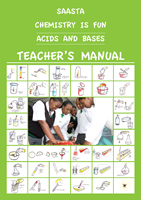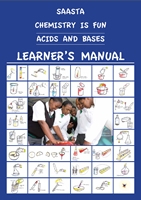| 50% of you think that the South African Government has the potential to make the biggest impact on reducing carbon emissions in South Africa; | |
| 8% opted for the technology sector; and | |
| 42% opted for private industry. |
Shuttle Discovery landed for the last time at Florida’s Kennedy Space Centre on 9 March 2011. Discovery has completed 39 space voyages (its first being on 30 August 1984), has spent a total of 365 days in space and travelled more than 238 million kilometres during it’s lifetime.

 |
 |
 |
In 100 years we have come a long way with chemistry. With further research and developments, what exciting developments await us in another 100 years time? Starting at the basics with acid and base tests, who knows what young minds will create in their futures.
One hundred years ago Madame Marie Curie received the Nobel Prize for Chemistry. This anniversary is one of the reasons why the United Nations declared 2011 the International Year of Chemistry (IYC 2011). Organisations all over the world will celebrate the achievements of chemistry and its contributions to the well-being of humankind.
As part of the theme “Chemistry – our life, our future”, the IYC 2011 intendeds to provide people with opportunities to participate in interactive, educational and entertaining activities. The IYC’s 2011 goals are to increase the public appreciation of chemistry to meet world needs, encourage interest in chemistry among young people, and generate enthusiasm for the creative future of chemistry.
This year is also the 100th anniversary of the founding of the International Association of Chemical Societies, which will highlight the benefits of international scientific collaboration.
Primary school resources for learners and educators
SAASTA has developed brand new chemistry resources for its Primary School Science Intervention project. The resources include learner and educator manuals, and a box with all the equipment and chemicals needed to do easy and fun chemistry experiments. These resources teach the learners the basic skills required to conduct experiments. Experiments in the box include testing for acids and bases using various indicators, exploring the properties of carbon dioxide, electrochemistry, and many more.
The electricity handout kits that SAASTA previously used for this project are still in great demand. Kits include background information on electricity, an electricity kit, instructions on how to build simple circuits, information on electrical safety, and how to save electricity.
Last year, educators in the Free State were trained to use the resources. SAASTA is currently identifying sites where further workshops and training will be offered on how to use the chemistry and electricity project sets.
For more information on this project contact Onica Phayane at SAASTA on onica@saasta.ac.za.
